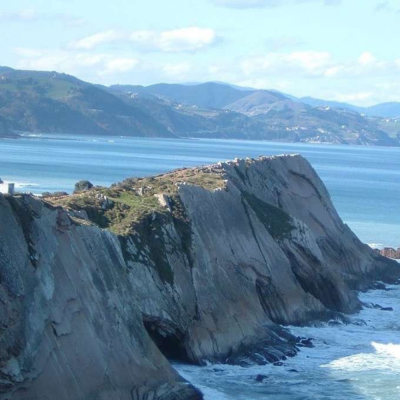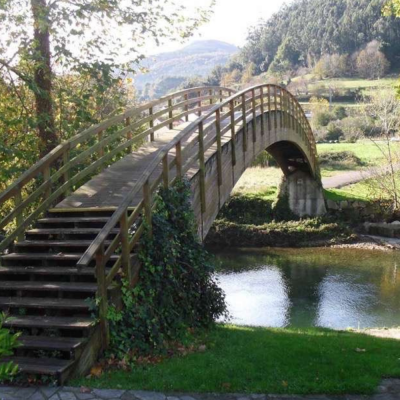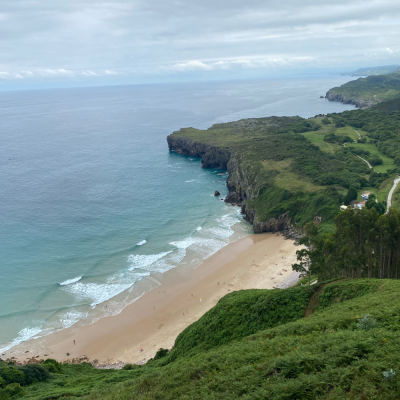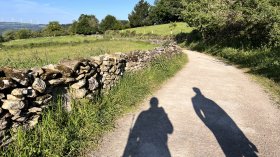
Create your own journey; Experience the best of Northern Spain at your own pace
This website uses its own and third-party cookies, for the proper functioning of the site and to generate usage statistics.
By continuing to browse we understand that you consent to our �ookie policy
Camino del Norte - A picturesque and alternative route along the North Coast, the Camino del Norte (The Coastal Route) will satisfy your every desire for nature, physical activity and a chance to indulge yourself at the same time. Camino del Norte passes some of the most iconic cities in Northern Spain such as San Sebastian, Bilbao, Santander and Gijón.

Pilgrimage from Hondarribia to Santiago along the Cantabrian coast.

Pilgrimage through the Basque Country landscape from Hondarribia to Bilbao.

Pilgrimage Between the Sea and the Mountains from Hondarribia to Santander.

Pilgrimage from Santander to Oviedo through beaches and scenic coastlines.

The last 2 weeks of Camino del Norte from Avilés to Santiago; Amidst Greenery and Sea.

Pilgrimage by bike along the Green Coast.
The Camino del Norte is also known as the Coastal Camino because it traverses the entire Northern Coastline of Spain with its beautiful surroundings, high cliffs on one side and the and sea on the other. The picturesque landscape and terrain make this alternative route a very special option. In addition, to being well sign-posted, the Camino del Norte offers everything from some of the most beautiful beaches in Spain to great restaurants, idyllic villages and exciting, unforgettable cities.
Historically, the Camino del Norte from the Old Kingdom of Asturias was the first one to take pilgrims to Santiago. So in reality, it is as old, if not older than the Camino Francés.
The Camino del Norte dates back to the period immediately following the discovery of the tomb of Saint James the Apostle, around 820 AD. When the medieval European kings began to arrive to Santiago they traveled this route giving it its name and expanding their territories along the Northern Coast. As the Reconquista advanced south and peace was gradually restored, the Camino del Norte became more and more prominent.
At one point in time, it saw a decline and was barely used. Currently, however, with the popularity of pilgrims walking to Santiago, its status and use as an ancient main pilgrims route - and not least, because of its beautiful nature scenery, the route has been given its prominence once again as a popular Camino.
The Camino del Norte was as busy as other routes long before the Spanish monarchs proclaimed the Camino Francés to be the ideal route because it provided a link for the Christian kingdoms in the north of the Iberian Peninsula. Still, their endorsement of the French Way did not cause a decline in the use of the Asturian and Galician pilgrimage routes. To the contrary, the stretch from Leon to Oviedo has enjoyed great popularity, from the late 11th century onwards.
The Camino del Norte was not only used by the Asturian's living along the shoreline, this medieval route also gave pilgrims access to the Sanctuaries of Oviedo and Santiago de Compostela. Although, perhaps not as well traveled as the French Way, the Camino del Norte was certainly bustling with activity until the 18th century. These pilgrims came by land from France or by sea from Northern Europe to the ports of the Basque Country and Cantabria, before setting out on their journey towards the Sanctuary of San Salvador of Oviedo and the Cathedral of Santiago. From the town of Ribadeo, the route continued inland through the valleys of Vilanova de Lourenza and Mondoriedo, and thereafter crossing the high flatlands of Vilalba and Guitiriz. At the Monastery of Sobrado dos Monxes, just before the route joined with the French Way in Arzua. Here the pilgrims received the hospitality of the local monks. Just a few more days before their pilgrims journey, finally brought them to Santiago de Compostela and the tomb of the Apostle.
Among the thousands of pilgrims who travelled to Santiago via the Camino del Norte, there is one personality that stands out more than any, Saint Francis of Assisi. Reports suggest that he made the pilgrimage to San Salvador in Oviedo and Santiago de Compostela in 1214.
Later, in the late 15th century, the Armenian Bishop Martyr of Azerbaijan made a pilgrimage to Rome and Santiago using the Northern Way, which passed through the Basque Country, Cantabria, Asturias and Galicia. There are two interesting chronicles dating from the 16th century recorded by pilgrims who travelled a similar route – Antonio Lalaing, Lord of Montigny (1502), and the Italian pilgrim, Bartolommeo Fontana (1539).
During the Baroque period, many pilgrims who also chose to chronicle their experiences and itineraries used the Camino del Norte, and so there are several chronicles describing the journey from that time as well.
The Galician stretch of this route covers 170 kilometres between Ribadeo and Santiago and is clearly sign-posted with stones decorated with a ceramic scallop shell and a vital piece of information for pilgrims – their exact location on the route. In addition to the famous yellow arrow of the Associations of the Friends of the Way, these milestones make it easy for the pilgrims to find their path, as they appear in strategic locations such as at crossroads and turn-offs.
Please feel free to contact Spain is more. We will be more than happy to help you to organize, the best suited itinerary according to your wishes on this beautiful Camino.
Buen Camino!
The Iron Cross in Foncebadón: A Pilgrim's Symbol of Transformation

Walk and Talk is not only effective as a meeting format at your workplace. Book a Camino journey and experience a new way of expressing yourself with the help of the nature...